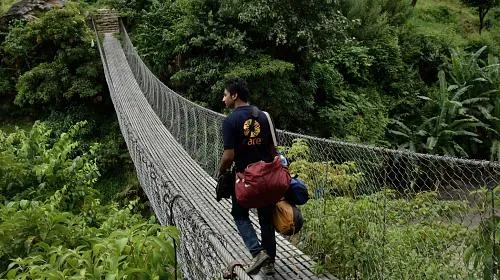KATHMANDU (October 13, 2015) — Having gotten through the heavy rains of the Monsoon in temporary shelters, 2.8 million people in Nepal are soon to face freezing temperatures with the onset of winter. International aid organization CARE is particularly concerned by the situation for pregnant women and infants lacking proper housing, clothes and blankets.
“Nepal is still a long way from having recovered and rebuilt after the devastation six months ago, and now with the end of the Monsoon making transport easier, it is crucial that the most vulnerable people are provided access to what they need to survive through winter,” says Lex Kassenberg, CARE’s country director in Nepal.
CARE will provide winterization kits to vulnerable families, such as pregnant and lactating mothers, elderly and people with disabilities, to help them keep warm. These kits include blankets and warm clothes. CARE will also provide trainings to masons and carpenters on safe shelter construction.
In the last six months CARE has assisted more than 130,000 people in the most affected areas. CARE seeks an additional funding of 11.6 million US$ to support long term recovery programs.
“As the initial emergency phase is over, we are now transitioning from emergency relief to reconstruction and recovery. CARE will work with communities to help them build back their homes safer and recover lost livelihoods through agricultural interventions and cash support” explains Kassenberg.
The main need in Nepal remains shelter. The majority of people are still living in temporary shelters made of corrugated iron sheeting. Now that monsoon season has ended, people are looking to start the long and expensive process of rebuilding permanent structures. CARE is working with communities to provide trainings to masons and carpenters, tools and other forms of assistance to help people in this next phase.
“Many people already know very well how to build homes in their traditional ways. We will work within this structure and provide easy and replicable ways to ensure the homes they build are safer and better protected against any future earthquakes, so we don’t see the same kind of devastation again,” says Alexandre Koclejda, CARE’s shelter expert in Nepal.

